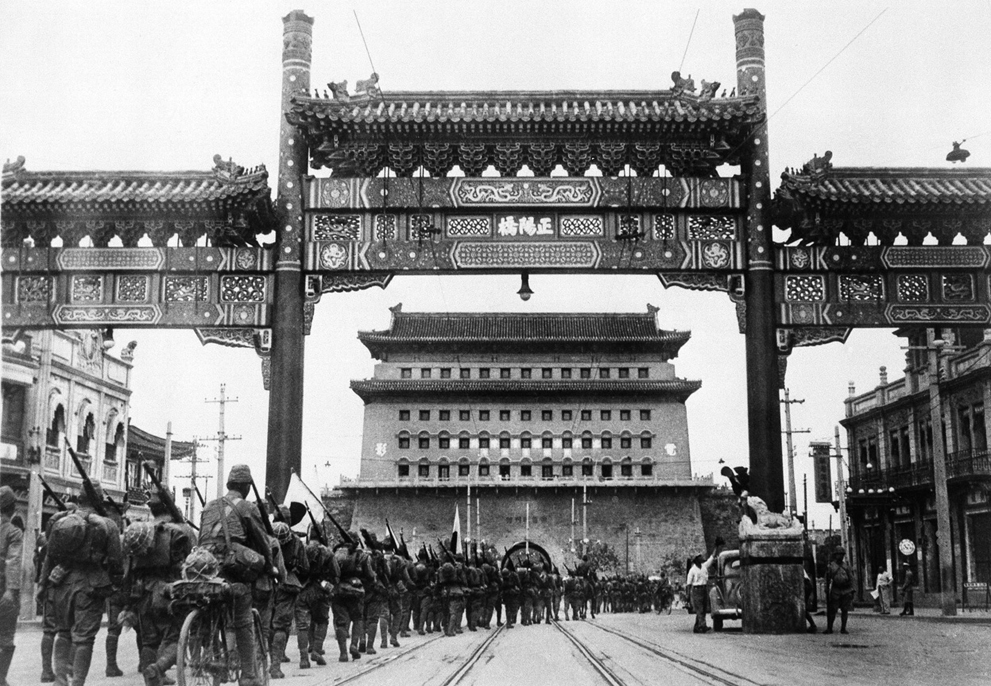Fall of Beijing, 1937
- By Peter Harmsen
- 29 July, 2014
- No Comments
 On July 29, 1937, China’s old imperial capital Beijing fell to Japanese forces. The image above shows the emperor’s troops marching through Qianmen gate into the city, officially called Beiping at the time. It was yet another sign that the confrontation between China and Japan, which had started three weeks earlier at Marco Polo Bridge near the city, had reached a new, dangerous stage.
On July 29, 1937, China’s old imperial capital Beijing fell to Japanese forces. The image above shows the emperor’s troops marching through Qianmen gate into the city, officially called Beiping at the time. It was yet another sign that the confrontation between China and Japan, which had started three weeks earlier at Marco Polo Bridge near the city, had reached a new, dangerous stage.
For the past decade, after the city of Nanjing further south had been made the capital of China, Beijing had no longer been the nation’s political center. But it remained a powerful symbol of past Chinese might, having been the seat of the emperors since the 13th century. It was no longer possible to argue that the Japanese empire was nibbling away at the fringes of China. This was Chinese heartland, and had been so for centuries.
The actual combat taking place in Beijing proper in the last days of July 1937 was relatively limited, but a much larger and bloodier battle erupted a few miles south of the city, as described in this extract from the book Shanghai 1937: Stalingrad on the Yangtze:
Once the Japanese reinforcements were in place at the end of July, an imperial order was issued instructing the local commanders to “chastise the Chinese Army in the Beijing-Tianjin area.” The well-equipped Japanese units unleashed a series of coordinated attacks, with extraordinary bloody results in some places. Chinese soldiers manning a barracks south of Beijing were nearly wiped out, and when a thin column of survivors tried to flee north through the fields towards the city, they were chopped to pieces by Japanese heavy machine guns places in advance along the escape route. The injured soldiers were left to die slow agonizing deaths under the scorching sun, as unfeeling peasants collected bayonets and other equipment useful for their work.
Also on July 29, Chinese auxiliary police ostensibly working for the Japanese rebelled in Tongzhou, a town east of Beijing that was home to 385 Japanese and Koreans at the time. Of these, 223 were murdered, many of them women and children. When the Japanese retook the city, they exacted terrifying retribution, as described in Shanghai 1937:
Japanese soldiers bent on revenge beheaded all the men they managed to capture, whether rebels or not, and raped the women. When they were done with Tongzhou, they swept the surrounding countryside searching for anyone who looked like a fleeing police officer, hard to determine at a distance, a gunned them down too. Finally they set the town on fire. It created a dense column of black smoke that could be seen by the horrified residents of Beijing in the following days. Now they knew what life and death under Japanese rule would be like.



 Copyright © 2024
Copyright © 2024
Leave a Reply